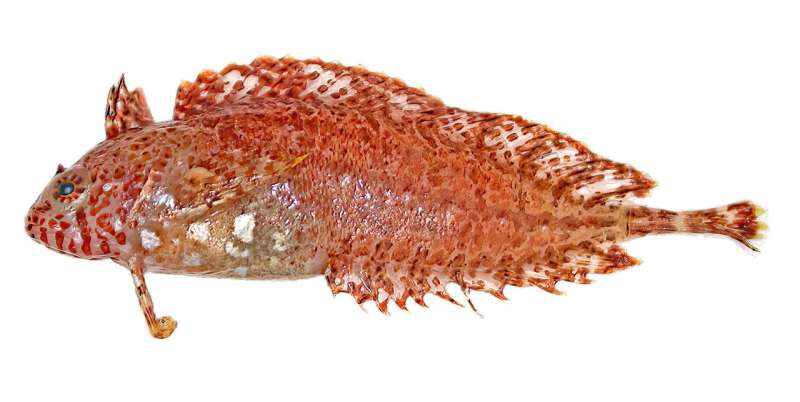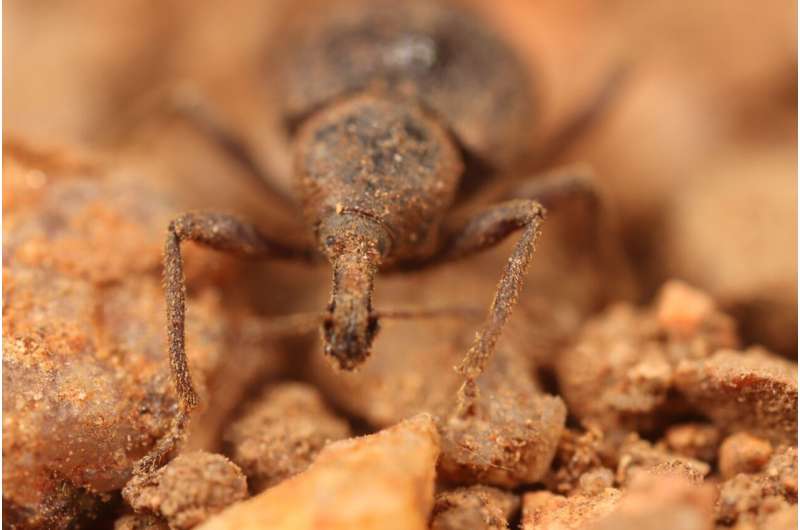From fish to ants: 139 new species named in Australia

In a win for biodiversity, CSIRO, Australia's national science agency, has revealed 139 new species were named and described by its researchers and partners in the past year. With only about 25 percent of Australia's species known to science, scientific names are vital for researchers, governments and the community to better understand the nation's vast ecosystems.
CSIRO scientist John Pogonoski, who helped name four new species of marine fish, said the work highlighted the importance of scientific collections including CSIRO's National Research Collections Australia. "We named three new species of small, brightly-colored anthias by comparing specimens of related species held in fish collections," Pogonoski said.
"New species of anthias are still being recognized because they are rarely encountered due to being outside of normal diving depths, small in size, or living in habitats difficult to sample."
Pogonoski said the new Silverspot Weedfish, Heteroclinus argyrospilos, was described from only two known specimens collected from south-western Australia by researchers on the former CSIRO Research Vessel Southern Surveyor in 2000 and 2005.
"The Weedfish were found 55 to 100 meters below sea level, which is interesting because they live deeper than other known members of the genus," he said.
In addition to 117 insects named during the past year, scientists named 14 other invertebrates including 11 jumping spiders, one millipede, one earthworm and one marine trematode which was discovered inside a fish.
CSIRO Entomologist Dr. David Yeates said the known but newly named ant Anonychomyrma inclinata was particularly special, with its support of the endangered Bulloak Jewel Butterfly, Hypochrysops piceatus. "The ecological requirements for this beautiful butterfly are very narrow, which is probably why it is so rare," Dr. Yeates said.
"The ant species we've now named needs to be nesting in a mature bulloak, Allocasuarina luehmannii. The butterfly caterpillars live under bark and are carried to soft bulloak leaves to feed at night by 'babysitter' ants. The ants protect the caterpillars from predators and receive a sugary gift from the caterpillars, a win-win for both species," he said.
The newly-named species also highlight the importance of collaboration, with most scientific papers involving authors from multiple scientific collections and universities across Australia and overseas.
"Working together with our research community to name species is incredibly important—it is the first step in Australia understanding and managing its biodiversity," Dr. Yeates said.
"As a country, we are still in the very exciting phase of species discovery," he said.

New species at a glance:
Marine fishes (4)
- Heteroclinus argyrospilos (Silverspot Weedfish) lives in waters 55 to 100m deep in south-western Australia (SA and WA).
- Pseudanthias paralourgus (Purple-tip Anthias) lives in waters 110 to 119m deep in southern Queensland.
- Tosana longipinnis (Longfin Threadtail Anthias) lives in waters 62 to 252m deep from the central Queensland coast to the central NSW coast.
- Tosana dampieriensis (Dampierian Threadtail Anthias) lives in waters 66 to 177m deep in northern Western Australia.
Plants (3)
- Lobelia pachytricha is a creeper with pretty blue to mauve flowers with yellow markings.
- Gomphrena axillaris and G. longistyla were described using specimens held in Australian herbaria.
Frog (1)
- Philoria knowlesi—a mountain frog from south-east Queensland.
Insects (117)
- 39 gall wasps from the Americas.
- 34 beetles, including the 2 weevils in the new genus Undarobius found in lava caves at Undara Volcanic National Park in north-eastern Queensland.
- 16 katydids
- 13 caddisflies
- 12 thrips
- 1 ant—Anonychomyrma inclinata, the obligate attendant for the rare and beautiful Bulloak Jewel butterfly Hypochrysops piceatus.
- 1 fly—Teratomyza ismayi, the first fern fly known from New Guinea.
- 1 bug—a treehopper found near Canberra and named Wallaciana namadgi after Namadgi National Park.
Other invertebrates (14)
- 11 Jumping spiders
- 1 Millipede—the first millipede with more than 1000 legs.
- 1 Earthworm
- 1 Marine trematode— Enenterum petrae was found inside a species of fish, the Brassy Drummer (Kyphosus vaigiensis), collected off Lizard Island in Queensland.
Provided by CSIRO

















